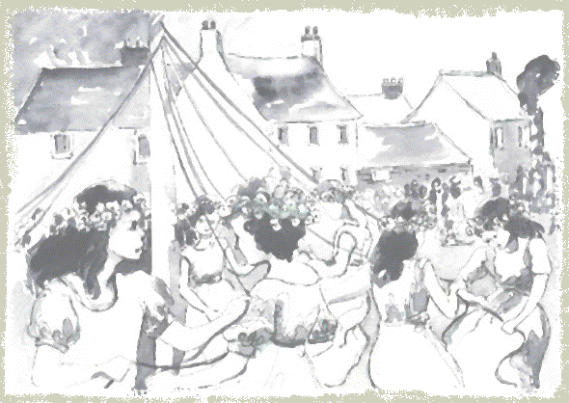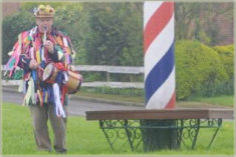



Wellow Village | Nottinghamshire

History of the Wellow Maypole

The
existence
of
the
Wellow
Maypole
can
be
traced
as
far
back
as
1856
and
on
the
9th
of
May
1860,
a
new
pole
had
to
be
erected
as
the
old
one
had
been
sawn
down
during
a
drunken
spree
a
few
weeks
earlier.
To
commemorate
Queen
Victoria's
Jubilee
in
1887,
a
new
pole
was
given
by
Sir
John
Savile,
which
had
three
cross
pieces
near
its
summit,
painted
spiral
decoration
and
a
seat
around
the
base.
In
1923,
Lord
Savile
replaced
the
Jubilee
Maypole.
This
pole
lasted
until
1937
when
it
was
deemed
to
be
unsafe
and
was
cut
down
from
60ft
to
20ft.
In
1949,
this
pole
was
finally
chopped
down
for
safety
reasons
and
in
1950
a
new
pole
was
bought
from
Rufford
Estates.
At
this
time
a
Maypole
Committee
was
formed
to
carry
on
the
tradition
and
organise
the
annual
event.
The 1950 pole lasted until 1966 when it was damaged by a storm, and was taken down and sold for firewood.
Another
pole
of
larch
was
obtained
from
Thoresby
Estate
but
on
finding
it
had
not
been
seasoned
properly,
it
was
declared
unsafe
and
in
1976
was
chopped
down
to
half
size.
That
year
the
dancing
took
place
around
the
reduced
pole.
Later
in
1976
the
remainder
of
the
pole
was
taken
down,
and
in
1977
with
the
help
of
a
heritage
grant,
a
three
section
tubular
steel
pole
was
purchased
from
Abacus
Engineering
of
Sutton
in
Ashfield.
The
present
pole
is
decorated
with
three
cross
pieces
with
metal
crown
shapes
at
each
end,
and
surmounting
the
pole
is
a
weathervane
made
by
a
local engineer.
In
November
2010
corrosion
concerns
resulted
in
its
removal,
to
be
replaced
in
March
2011
by
another
steel
pole
17
metres
high.
The
original
weathervane
and
cockerel
have
been
renovated
and
replaced,
together
with
new
cross-pieces
and
crowns.
Look
closely
and
you
will
see
that
the
new
maypole
has
18
sides
and
is
therefore
believed
to
be
unique
among
the
70
or
so
permanent
maypoles
in
the
country.
Wellow
is
one
of
only
a
handful
where
ribbon
dancing
around
the maypole still takes place.




The Wellow Village History Website















